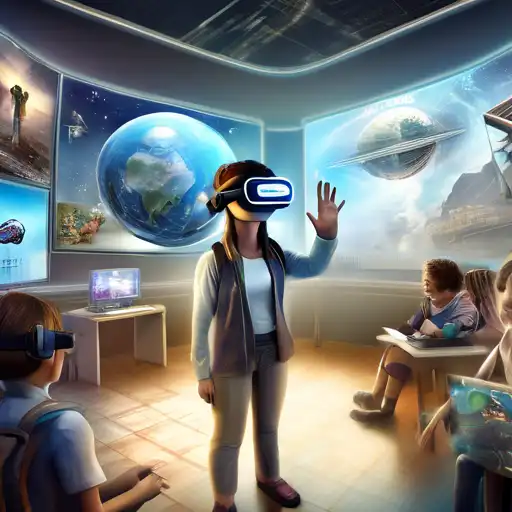Introduction to Virtual Reality in Education
Virtual Reality (VR) is rapidly transforming the educational landscape, offering immersive learning experiences that were once beyond imagination. This technology enables students to explore historical sites, dissect virtual frogs, or even travel through the human bloodstream, all from the safety of their classroom. The potential of VR in education is limitless, providing a dynamic and interactive way to engage students in their learning journey.
The Benefits of VR in Learning Environments
VR technology offers numerous advantages in educational settings. Firstly, it enhances engagement by immersing students in a 3D environment, making learning more interactive and fun. Secondly, it caters to various learning styles, especially visual and kinesthetic learners, by providing hands-on experiences. Additionally, VR can simulate real-world scenarios, allowing students to practice skills in a safe, controlled environment. This is particularly beneficial in fields like medicine, engineering, and aviation.
Challenges and Considerations
Despite its benefits, integrating VR into education comes with challenges. The cost of VR equipment and the need for technical support can be prohibitive for some institutions. There's also the issue of ensuring content is pedagogically sound and aligns with curriculum standards. Moreover, prolonged use of VR headsets may cause discomfort or health issues for some users, necessitating careful implementation.
Future Prospects of VR in Education
The future of VR in education looks promising, with advancements in technology making it more accessible and affordable. As VR content becomes more sophisticated, we can expect to see its application expand beyond STEM subjects to include arts, humanities, and social sciences. Collaborative VR platforms could also enable students from around the world to learn together in virtual classrooms, breaking down geographical barriers.
Getting Started with VR in Your Classroom
For educators interested in incorporating VR into their teaching, starting small is key. Begin with simple VR apps that don't require expensive equipment, such as smartphone-based VR experiences. It's also important to seek professional development opportunities to understand how to effectively integrate VR into lesson plans. Partnering with tech-savvy colleagues or local universities can provide valuable support and resources.
Virtual Reality is not just a fleeting trend in education; it's a powerful tool that can enhance learning and teaching in unprecedented ways. By embracing VR, educators can provide students with unique opportunities to explore, experiment, and engage with content like never before. The journey into virtual reality in education is just beginning, and its full potential is yet to be unlocked.
